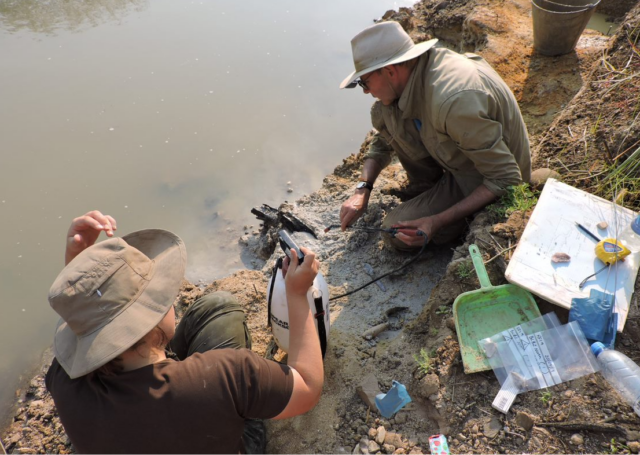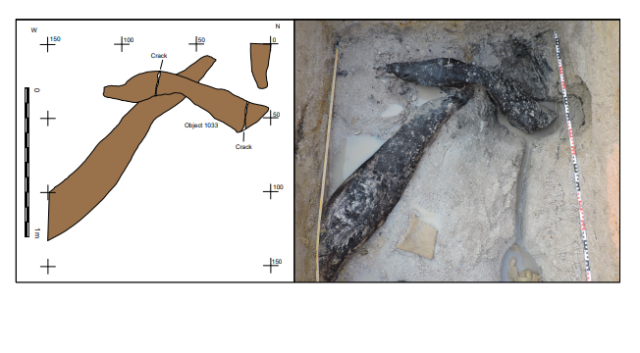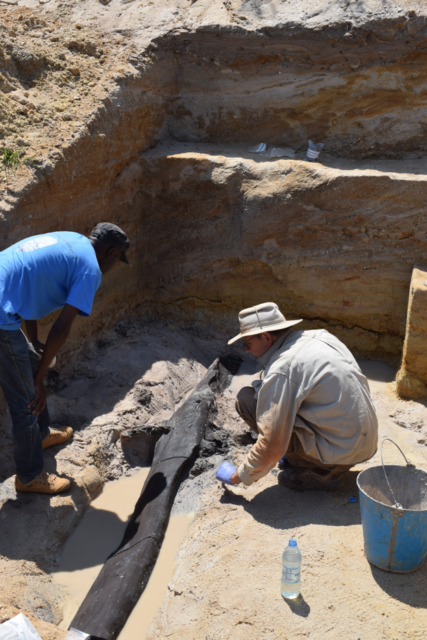What we thought we knew about hominini of the Stone Age has been flipped upside-down. Researchers discovered an ancient structure dating back almost half a million years, and what it suggests has ultimately changed the common perception of these ancient species. More work on the area is sure to provide more information.
Discovering the tools and structure

A research team comprised of experts from the University of Liverpool and Aberystwyth University have found primitive wooden tools and structures at a site in Kalambo Falls, Zambia, dating back to 476,000 years ago. The earliest-known Homo sapien fossils date back about 300,000 years, meaning this discovery predates those by a significant margin.
As there were no human remains found at the site, Professor Larry Barham with the University of Liverpool’s Department of Archaeology believes the tools and structure were fashioned by a species known as Homo heidelbergensis, which lived about 700,000-200,000 years ago, with larger brow ridges, flatter faces and a bigger braincase than earlier hominini.
At the site, researchers found a digging stick, a wedge, a notched branch, and a cut log. These items were extremely well-preserved considering their age, as they were surrounded by clay sediment, which encased the wood items in an oxygen-free environment.
Homo heidelbergensis wasn’t as nomadic as we initially thought

For a long time, scientists believed these early species were a nomadic group, moving from place to place for survival. However, the discovery of this structure suggests they didn’t move around as much as originally thought. The fact they were crafting tools means they weren’t necessarily dependent on hunting and gathering in the way we used to believe they were. Additionally, the tools suggest they knew a thing or two about simple construction.
Researchers believe the structure found at Kalambo Falls could’ve been part of a larger settlement. It was constructed from “two interlocking logs joined transversely by an intentionally cut notch.” This is far more advanced than what a fully nomadic species would have been capable of.
As Barham explains, “The framework could have supported a walkway or platform raised above the seasonally wet surroundings. A platform could have multiple purposes including storage of firewood, tools, food and as a foundation on which to place a hut.”
He adds that “the structure involves the intentional shaping of two trees to create a framework of two interlocking supports. A notch was cut into the overlying log and the underlying tree was shaped to fit through the notch. This arrangement prevents the overlying log from moving side to side, giving stability to the structure,”
What’s most interesting is that Homo heidelbergensis’ construction of a wood structure suggests they were settling in one place for an extended period. While it’s unclear how long that may have been, what is clear is that they found Kalambo Falls to be an ideal location for settlement, given its access to water and sufficient vegetation.
Changing our perception of human history

The discovery effectively changes our perception of ancient history. Prior to this, the only evidence of more advanced intelligence from species of the period was the fashioning of crude spears from wood and the ability to make fire. Now, Homo heidelbergensis has proven to be far more resourceful with their environment.
“This find has changed how I think about our early ancestors,” Barham said in a press release from the University of Liverpool. “Forget the label ‘Stone Age,’ look at what these people were doing: they made something new, and large, from wood. They used their intelligence, imagination, and skills to create something they’d never seen before, something that had never previously existed.”
More from us: Archaeologists Discover Vibrant 2,000 Year Old Painting in Pompeii
Not only did they display advanced intelligence, but they were able to use it to conceptualize and construct a rudimentary housing structure that allowed them to settle in one place. The fact that such artifacts were able to be preserved for this long is a miracle in itself, and more research will hopefully illuminate even more information about these ancient hominini.
